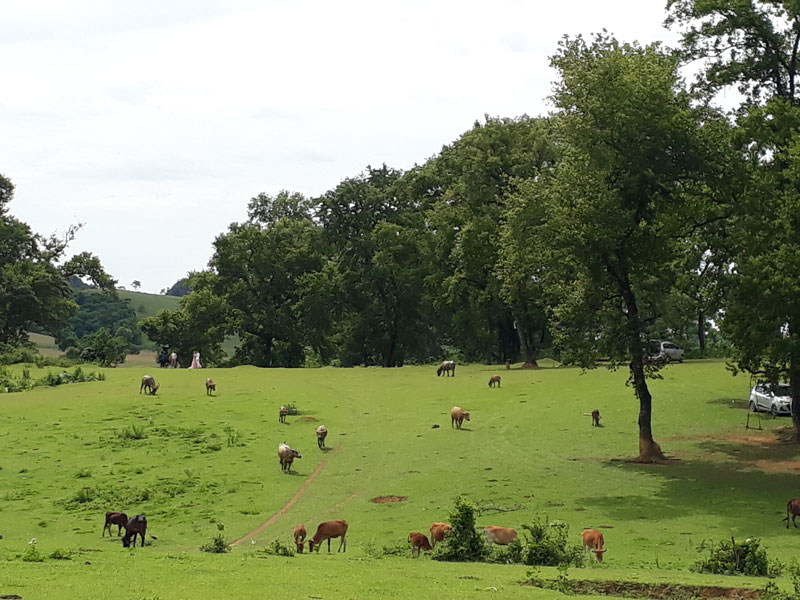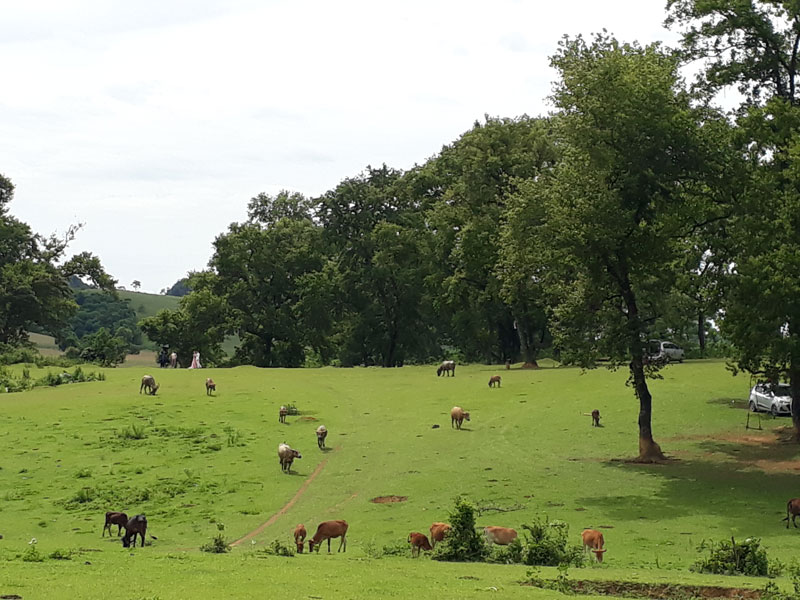
(HBO) - Lac Son - Muong Vang is one of four large Muong ethnic areas in the province. The Muong ethnic people living there account for over 90% of the population. Since the ancient time, Muong Vang has been famous for the typical cultural values featured in Mo Muong rhythm, traditional festivals, beliefs of the people. Besides, Lac Son district is also naturally gifted with mountains and beautiful lakes; rich and various cave system; cool climate. All of these are attractive to tourists who want to explore Lac Son land.
Bai Nha (Ngoc Son commune) is a fairly flat
hill, the bottom of which is fields of paddy, maize, sugarcane yards, the lake
is surrounded by majestic mountains, the primary forest has created so
beautiful natural landscape. This is the ideal place to organize paragliding
activities.
With flat terrain, beautiful scenery,
stretching about 1 hectare, Bai Bui field (Ngoc Lau commune) becomes a stopover
for sightseeing, organizing entertainment activities such as camping, fire -
camping for tourists.
Thung Hill (Quy Hoa commune) is located at an
average height of 1,073m above sea level. Thung Hill has the rolling mountain;
natural scenery is so majestic and romantic.
A tourist site, which is very attractive for
visitors to explore, is Mu Waterfall (Mu village, Tu Do commune). Mu was formed
by an underground stream from majestic mountains at the altitude of above
1,000m above sea level in the Natural Reservation Zone of Ngoc Son - Ngo Luong.
In the Waterfall, there is Mu Cave with the marvels of stalactites. With the
pristine original scenery, majestic mountains and forest, it is one of the
great potential for Lac Son district to explore and develop their tourism.

Bai Bui field, Ngoc Lau commune (Lac Son) is
an ideal stopover for tourists.
Besides the natural tourism potential, Lac
Son district has a revolutionary historical system. According to statistics,
the district has 23 archaeological relics, cultural and historical relics. In
addition, the district preserves many caves of archaeological treasures of
ancient Muong ethnic people, such as: the stone roof of Vanh village is a
national archaeological monument. Khu Dung Cave is one of the beautiful natural
caves of Hoa Binh province. Lac Son also preserves the traditional festivals of
Muong ethnic people, such as Chieng Muong Festival, the festival of field
coming – Du Voi.
In the first 6 months of 2018, the district
has welcomed more than 20,000 visitors, including over 1,000 of international
visitors. The total revenue from tourism has reached over 4 billion VND.
Located just a 20-minute drive from Hoa Binh City, Ora Hill Farmstay & Glamping Hoa Binh is a captivating new destination nestled in Mo hamlet, Bình Thanh commune, Cao Phong district. Combining farming with leisure, this tranquil retreat is perfect for those seeking balance, joy, and an immersive experience in the expansive beauty of nature.
Muong Bi - Tan Lac is renowned as one of the four famous Muong regions in Hoa Binh province. Blessed by nature with a favourable climate and stunning landscapes, Tan Lac holds great advantages for tourism development. The local tourism industry has made remarkable strides in recent times thanks to the attention and support from the local authorities and sectors.
With its strategic location, well-developed transport network, and diverse soil and climatic conditions, Hoa Binh is emerging as a must-visit destination in Vietnam's northwestern tourism corridor. The province boasts numerous attractions, including the Kim Boi hot springs (Kim Boi district), the Dau Rong cave complex (Cao Phong), the Mai Chau valley (Mai Chau), and the iconic Hoa Binh hydropower plant.
The northern mountainous province of Hoa Binh has been listed among the 71 most beautiful places to visit worldwide by the prestigious US travel magazine Condé Nast Traveller.
Hoa Binh province’s rich natural and cultural resources position it as a prime location for developing community-based tourism (CBT). In recent years, support from central and provincial policies, as well as assistance from non-governmental organisations, have encouraged local ethnic minority and mountainous communities to actively engage in the sector.



